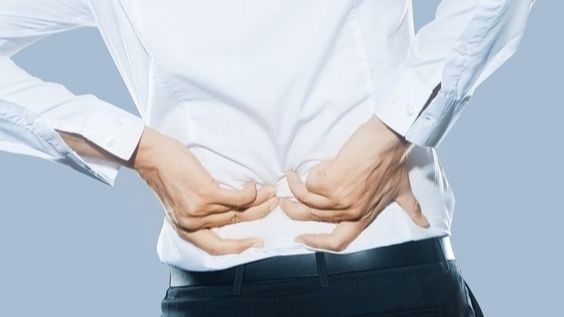
The term lower back pain in Chinese medicine encompasses pain, aching, discomfort or weakness in one or both sides of the thoracic, lumber and sacral region, and buttocks. The pain may radiate into the posterior or lateral thighs. Pain originating from the lumber spine or musculature is one of the commonest complaints in the clinic, affecting an estimated 80% of people at some stage of their lives. Diagnosis is almost entirely subjective for non-pathological lower back pain, that is, lower back pain that has little or no evidence of structural defect or abnormality. Even in cases with an identifiable pathology, there is generally a poor correlation between x-ray and CT findings, and symptoms. The exception for pain originating from the spine is true disk herniation and sciatica, where neurological signs correlate with radiological findings. In these cases, a firm diagnosis can be made. This is also the case for viscerogenic lower back pain, this is, pain caused from carcinoma, pelvic inflammation or kidney stones.
Even though a large percentage of patients with lower back pain will remain undiagnosed, the types of conditions that may be responsible include rheumatoid and osteoarthritis, degenerative spinal disorders, facet joint syndrome, soft tissue injury, prolapsed intervertebral discs, kidney diseases like pyelonephritis, kidney stones and poly cystic kidneys, tumors, intestinal and gynecological disease.
The Chinese noticed that disorders affecting the Kidneys often give rise to lower back pain and thus called the lower back pain the ‘palace of the Kidney’. In practice, this means that a large proportion of lower back aches have a component of Kidney deficiency, either as a predisposing factor to back injury or as a result of chronic pathogenic influence. In general, there are two broad types of back pain, excess and deficiency. Excess patterns are due to the presence of a pathogenic influence, commonly Cold, Damp, stagnant qi or stagnant blood. Deficient patterns are associated with weakness of Kidney yin, yang or qi. Frequently, deficient and excess types will co-exist, as weakness of the Kidney enables pathogens to penetrate through the channels of the back.
The external pathogens, Wind, Cold, Dampness and Damp Heat may penetrate the channels traversing the lower back, impending circulation of qi and blood, causing pain. Cold and Dampness are the most common, and these pathogens can invade the body after exposure to environmental cold damp, for example sitting in cold damp ground, wearing damp clothing, exercising vigorously and sweating in cold damp weather and prolonged immersion in cold water.
Other patterns that may cause back pain include
– Damp heat
– Blood stagnation
– Liver qi stagnation
– Spleen deficiency
– Kidney deficiency
The main principal of treatment in acute pain is to invigorate the circulation of qi and blood, remove obstruction, unblock the channels and stop pain. Acupuncture is very effective for lower back pain and is the treatment of choice in acute cases. Point selection depends on the location and radiation of the pain and the channel or channels invaded.
